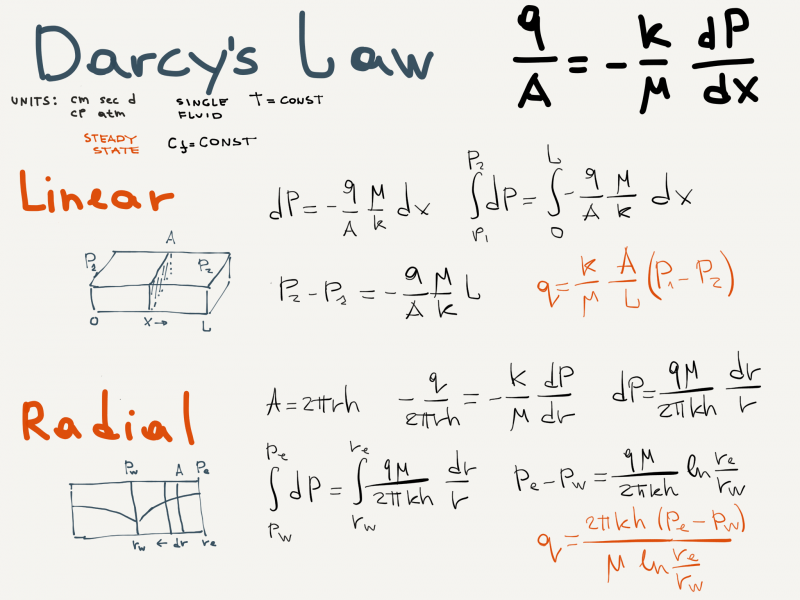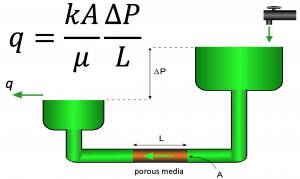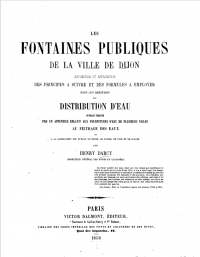Difference between revisions of "Darcy's law"
From wiki.pengtools.com
(→References) |
|||
| Line 50: | Line 50: | ||
|place=Paris | |place=Paris | ||
}}</ref> | }}</ref> | ||
| + | |||
| + | <ref name=DakeF>{{cite book | ||
| + | |last1= Dake |first1=L.P. | ||
| + | |title=Fundamentals of Reservoir Engineering | ||
| + | |date=1978 | ||
| + | |publisher=Elsevier Science | ||
| + | |place=Amsterdam, Hetherlands | ||
| + | |isbn=0-444-41830-X | ||
| + | }}</ref> | ||
| + | |||
</references> | </references> | ||
Revision as of 13:31, 22 July 2019
Contents
Darcy's law
Darcy's law is the fundamental law of fluid motion in porous media published by Henry Darcy in 1856 [1].
Darcy's law History
Darcy's law Equation
Conditions
- Single fluid
- Steady stay flow
- Constant fluid compressibility
- Constant temperature
Inflow Equations Derivation
Derivation of the Linear and Radial Inflow Equations

Nomenclature
 = cross-sectional area, cm2
= cross-sectional area, cm2 = permeability, d
= permeability, d = length, cm
= length, cm = pressure, atm
= pressure, atm = flow rate, cm3/sec
= flow rate, cm3/sec
Greek symbols
 = Darcy's law fluid viscosity, cp
= Darcy's law fluid viscosity, cp
See Also
Darcy's law application in Petroleum Engineering Technology.
References
- ↑ Darcy, Henry (1856). "Les Fontaines Publiques de la Ville de Dijon". Paris: Victor Dalmont.
Cite error: <ref> tag with name "DakeF" defined in <references> is not used in prior text.



